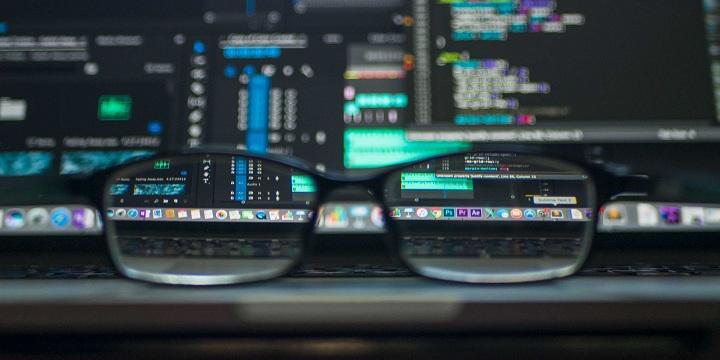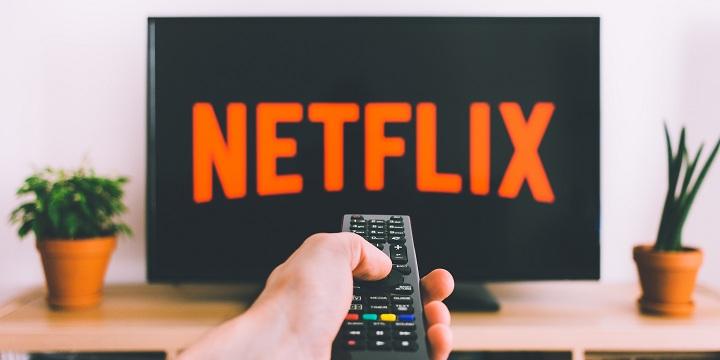
As the decade comes to a close, the team here at Sync NI has been looking back at some of the major tech trends that have become such a part of our lives that it seems surprising that they only happened in the past ten years:
#1 - The proliferation of smartphones

While the first smartphones were released prior to 2010, this was definitely the decade when everyone got on board with them. It’s hard to remember a time when we didn’t all walk around with supercomputers in our pockets and a permanent connection to the internet, but this really is a recent phenomenon. The 4G network rollout even happened in this decade, with the UK’s first 4G cities switching on at the end of 2012 and delivering the first really reliable high-bandwidth mobile data options.
Smartphones have led us to lead more digitally connected lives, but not all of this change has been positive. This was also the decade that social media took over our lives, and when companies were exposed for tracking us in detail and selling our personal data for profit. The benefits of smartphones today are undeniable, though, and some are now calling for smartphone access to be considered a universal human right. Access to the internet was officially declared to be a human right by the UN in 2016, and it’s becoming increasingly important to have quick access wherever you happen to be.
Can you remember the last time you had to buy a map, look up a company in the Yellow Pages, or even made a call from your landline phone? I sure can’t. Geolocation and online maps have changed the way we navigate, online shopping and reviews have changed how we interact with businesses, and some people are dropping their home phones entirely. This really has been the decade that smartphones took off.
#2 - The new artificial intelligence boom

The field of Artificial Intelligence has had a shaky history, completely stalling out in the mid-1970s and again in the early 1990s. Though a lot of progress was made in the field by 2010, it’s only in the past ten years that artificial intelligence has started to become fully realised. This was the decade of neural networking, machine learning, and big data. Data storage cost finally reached the point at which vast stores of information could be collected on everything from internet traffic to HD cat videos, and companies put it to use in developing AI.
Today you’ll find AI in everything from your internet search results and transcription software to computer graphics in movies. It helps interpret the results of medical scans, identifies agricultural disease, and has even composed music and created art. AI-based trading algorithms now fight on the stock market, and computer vision systems help locate missing people and criminals on security camera footage. They’re even now beating us at video games.
There’s a dark side to the modern AI revolution, though. Some major companies have begun using AI for things such as screening job applications and may be inadvertently baking in discrimination against women, disabled people, and minorities. There’s also a whole field based on detecting deception in video despite the evidence suggesting that this isn’t possible. This past decade has been a boom period for techniques in artificial intelligence, and the challenge now is to ensure that people understand the limits of the technology and use it for good.
#3 - Netflix and video streaming

It's hard to remember a time before video streaming services were the norm, but this is a trend that really only picked up steam this decade. Netflix's video streaming service officially launched in UK and Ireland in 2012, popular gaming video service Twitch.tv only launched in 2011, and Amazon Prime Video's current incarnation only really came together in 2014. This is definitely the decade when video streaming services took off, driven by global improvements in internet infrastructure to meet bandwidth needs and the rising popularity of subscription services.
What may come as even more of a shock to most is that Netflix was actually launched not this decade, but way before it in 1997 with a $2.5m initial investment. US founders Reed Hastings and Marc Rudolph intended it to become the media equivalent of Amazon. Back then, for $20 a month, subscribers could rent an unlimited number of DVDs, one at a time which were posted out in envelopes coloured the company’s iconic red.
By the year 2000, Netflix was losing money, yet co-founder Hastings predicted even back then that movies could eventually be rented more conveniently by streaming them online. Technology was not there yet though and Hastings approached Blockbuster, America’s original best-selling rental video store.
He suggested that Blockbuster buy a 49% stake in Netflix for $50m and it would become the rental company’s streaming service, absorbing its name. The once booming entertainment company declined, and declined at least three more times when Hastings wouldn’t take no for an answer. In 2004, Blockbuster launched its own streaming service but by then, it was too late. Hastings has admitted that if Blockbuster had launched their own service even two years earlier, they would have driven Netflix out of business.
Netflix now has more than 120 million subscribers since it introduced is official streaming services in 2007. In 2013, ‘House of Cards’ was the first Netflix-produced show to be premiered. There is only one Blockbuster store left in existence in Oregon, USA. Netflix has since paved the way for similar streaming sites with their own successes, such as Hulu, Amazon Prime and Disney+ which is to be launched in the UK at the end of March 2020.
#4 - Smart speakers and virtual assistants

The rise of ‘virtual assistants’ is a trend that has come about in the latter half of this decade. Amazon is leading the way with its Echo voice-activated speaker device (with virtual assistant Alexa built in), but people tend to forget that the same technology was already being used through applications like Siri on IOS devices, Cortana on Microsoft and Google assistant on Androids. The assistants typically use artificial intelligence, machine learning and voice recognition technology to adjust the user experience and improve their assisting capabilities.
The Tech Hour reports that 72% of people who own a voice-activated speaker say that their devices are often used as part of their daily routine. This popularity has also been accompanied by controversy, with accusations that virtual assistants on our devices are listening to use and possibly breaching personal data. Some developers have found that these gadgets can be activated remotely to make them open random sites or even dial numbers. Yet an experiment earlier this year – which saw two identical phones being put in two separate rooms - suggested that there is no evidence that smartphones or apps were secretly listening to conversations.
Alexa first launched on the Amazon Echo in November 2014 and Google followed suit with Google Home two years later. Both have been adapted and improved with the years, and will no doubt continue to do so. It is predicted that eventually people could have entire ‘smart’ houses, as with the correct compatible accessories for the likes of the Amazon Echo, Alexa could boil your kettle, change your TV channel and turn on and off your lights, all simply with your voice command.